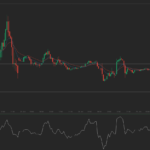The yen rose the highest level in a week against the US dollar after downbeat Chinese industrial-production growth data and worsening tension between Ukraine and Russia, spurred demand for haven assets, including the Japanese currency.
USD/JPY hit a session low at 102:42 at 08:29 GMT, after which the pair consolidated at 102.51, losing 0.25% for the day. Support was likely to be received at March 6th low, 102.33, while resistance was to be met at March 12th high, 103.10.
Demand for the yen as a safe-haven was heightened, following the release of weaker-than-expected data from China. According to a report by the Chinese National Bureau of Statistics, industrial production rose 8.6% in February compared to a year ago, or below preliminary estimates pointing to a 9.5% gain.
Retail sales in the country climbed at an annualized rate of 11.8% in February, while the median estimate of experts pointed to an increase by 13.5%.
In addition, demand for the Japanese currency was supported as the recent unrest in Ukraine hurt emerging market assets, helping the MSCI All Country World Index to cap its longest run of losses since December 13th yesterday.
At the same time, the parliament of the southern Ukrainian region, Crimea voted on Tuesday that the Black Sea peninsula will declare itself an independent state if its residents approve a March 16 referendum on splitting from Ukraine and joining the Russian Federation as Western leaders threaten sanctions. Yesterday, the US President Barack Obama assured the Ukrainian Prime Minister Arseniy Yatsenyuk that the US will stood with Ukraine to protect its sovereignty and territorial integrity.
The Economic and Social Research Institute reported yesterday that in Japan, core machinery orders surged by 13.4% in January from a month ago, the most since March 2013 and exceeding almost twice the 7% increase expected by analysts. In December, core machinery orders plunged by 15.7%. Bookings soared by an annualized rate of 23.6% in January compared to a year ago, over three times more compared to the previous month increase of 6.7% and exceeding analysts projections of a 18.9% increase.
Meanwhile, data today may show that retail spending in the US, which account for almost 70% of the economy, rose 0.2% last month, after contracting 0.4% in the previous month. At the same time, separate data may show the number of people filing for initial jobless benefits in the US rose by 7 000 to 330 000 in the week ended March 8, from 323 000 a week ago. Better-than-expected figures will certainly heighten the appeal of the US dollar.
However, a surge in retail sales may give investors “another risk to worry about, the risk that the U.S. economic pick-up raises fears of a backing up of U.S. rates,” according to Steven Englander, the New York-based global head of Group-of-10 currency strategy at Citigroup Inc., cited by Bloomberg.
Greenback’s demand was supported earlier in the week after two Fed officials commented that the hurdle rate to alter the pace of Fed stimulus cuts was too high. The Fed stimulus program tends to devalue the US currency.
At the same time, Fed officials will try to determine whether the weakness economy has recently demonstrated is due to temporary factors, before their next policy meeting scheduled for March 18-19th.
The central bank announced in December that it will pare monthly bond-buying purchases by $10 billion, after which it decided on another reduction of the same size at the meeting on policy in January, underscoring that labor market indicators, which “were mixed but on balance showed further improvement”, while nation’s economic growth has “picked up in recent quarters.”
Elsewhere, EUR/USD touched a session high at 1.3956 at 08:00 GMT, after which consolidation followed at 1.3946, adding 0.3% for the day. Support was likely to be received at March 12th low, 1.3843, while resistance was to be encountered at October 31st 2011 high, 1.4169.





